Upcomming Events
-
19Paush
-
21PaushGuru Gobinda Singh Jayanti 2 days remaning
-
23PaushAraniko Smriti Day 4 days remaning
-
24PaushNepal Astrology Council Establishment Day 5 days remaning
-
27PaushPrithivi Jayanti/Rashtriya Ekata Diwas/Gorakhkali Puja 8 days remaning
-
29PaushNational Bhakka Day 10 days remaning
-
30PaushShattila Ekadashi 11 days remaning
-
1MaghMakar Sankranti/Ghiu chaku khane Din/Uttarayan Arambha 12 days remaning
-
2MaghNational Earthquake Safety Day/Pradosh Vrata 13 days remaning
-
5MaghSonam Lhochhar/Shree Ballav Jayanti 16 days remaning
-
8MaghTilkunda Chauthi 19 days remaning
-
9MaghBasanta Panchami vrata/Saraswati Pooja 20 days remaning
-
10MaghSkanda Sasti/Achala Saptami/International Day of Education 21 days remaning
-
11MaghGorakhkali Puja/World Leprosy Day 22 days remaning
-
12MaghInternational Custom Day 23 days remaning
-
13MaghDron Nawami 24 days remaning
-
15MaghBhima Ekadashi Vrata 26 days remaning
-
16MaghSahid Diwas/Pradosh Vrata 27 days remaning
-
18MaghShree Swasthani Brata Samapti/Poornima Wrata 29 days remaning
-
19MaghWorld Wetlands Day 30 days remaning
-
21MaghWorld Cancer Day 32 days remaning
-
25MaghRavisaptami Vrata 36 days remaning
-
26MaghGorakhkali Puja 37 days remaning
-
28MaghInternational Day of Women and Girls in Science/Safer Internet Day 39 days remaning
-
1FalgunKumbha Sankranti/Bijaya Ekadashi Vrata/World Radio Day 41 days remaning
-
2FalgunShani Pradosh Vrata/Valentine's Day 42 days remaning
-
3FalgunMaha-Shivaratri / Army Day/Silachahre Puja 43 days remaning
-
6FalgunGyalpo Lhosar 46 days remaning
-
7FalgunPrajatantra Diwas / Election Day 47 days remaning
-
8FalgunWorld Day of Social Justice 48 days remaning
-
9FalgunInternational Mother Language Day 49 days remaning
-
12FalgunBhaumashtami Wrata/Gorakhkali Puja 52 days remaning
-
15FalgunAmalaki Ekadashi Vrata/World NGO Day 55 days remaning
-
17FalgunPradosh Vrata/Zero Discrimination Day 57 days remaning
-
18FalgunFagu Poornima / Holi/Poornima Vrata 58 days remaning
-
19FalgunFagu Poornima (Terai)/Khandagras Chandra Grahan/World Wildlife Day 59 days remaning
-
20FalgunTel Lagaune Ra Aapko Mujura Khane Din 60 days remaning
-
24FalgunInternational Womens Day 64 days remaning
-
27FalgunGorakhkali Puja 67 days remaning
-
1ChaitraMeen Sankranti/Paapmochini Ekadashi Brata/World Consumer Rights Day 71 days remaning
Jyotish
-
Jyotish Krishna Prasad Bhandariउपप्राध्यापक (Asst. professor of Sanskrit) नेपा�...
-
Jyotish Purushottam Ghimireनेपाल संस्कृत विश्वविद्यालय, �...
-
Jyotish Vaman Sapkotaशिक्षा - व्याकरणाचार्य, पौरोही...
-
 Jyotish Dharmendra Krishna Paudelशास्त्री धर्मेन्द्र कृष्ण पौ�...
Jyotish Dharmendra Krishna Paudelशास्त्री धर्मेन्द्र कृष्ण पौ�...
-
Jyotish Mohan Ghimireसम्पुर्णानन्द संस्कृत विश्वव...
-
Jyotish Narayan Prasad Gautamगुरुकुल शिक्षा प्रणालीबाट ज्�...
-
Jyotish Pandit Mukunda Nepalज्योतिष पण्डित मुकुन्द नेपाल�...
-
Jyotish Smarika Acharyaबाल्मीकि बिद्यापिठ बाट ज्योत�...
-
Jyotish Damodar Poudelनेपाल संस्कृत विश्व बिद्यालय�...
-
Jyotish Amrit Paudelवाराणसीकै सम्पूर्णानन्द संस्...
-
Jyotish Khageshwor Subediगुरुकुल पद्दति बाट ज्योतिषीय �...
-
Jyotish Dipendra Khatiwadaसम्पुर्णानन्द संस्कृत बिश्वब...
-
Jyotish Narayan Prasad Bhandariज्योतिषका उप-प्राध्यापक (lecturer of A...
-
 Jyotish Kuresh Pandey११ वर्षको अनुभवसहित विभिन्न ध�...
Jyotish Kuresh Pandey११ वर्षको अनुभवसहित विभिन्न ध�...
-
Jyotish Deepak Prasad Kafleसम्पूर्णानन्द संस्कृत विश्वव...
-
 Jyotish Mukunda Sharmaस्वाध्याय, सत्सङ्ग र सदाचारजस�...
Jyotish Mukunda Sharmaस्वाध्याय, सत्सङ्ग र सदाचारजस�...
-
Jyotish Damodar Kaushikज्योतिष र व्याकरण विषयमा आचार�...
-
Jyotish Hamro patroनेपाल संस्कृत विश्वविद्यालय �...
-
Jyotish Ghanashyam Pokharelनेपाल संस्कृत विश्वविद्यालयब...
Hororscope
साउन शुक्ल पूर्णिमा
जनै पूर्णिमा
Exclusive audio
Now the convoy of festivals has started to come to add more joy in the happy time after planting. It's time to sigh after planting, festivals add a different color to life.
The festival of happiness, especially the colorful rakhis, has added sparkle to the shops. And if you are a sister, you bought it for your brothers? And what kind of gifts do the brothers have for their sisters today?
Every festival has its significance and context like some are festivals commemorating the importance of soil, the festival of water, and today it is a festival of thread and bondage in Janapurnima. The thread is bondage, a bond of holiness and security.
Yanjnopawit- its making and significance in Sanatana Philosophy
According to Hindu tradition, Brahmins and Kshatriya men have been wearing Yajnopavit, i.e. Janai. After chanting the Gayatri mantra in the ears of the boy (Batuk) by the Guru-Purohit after performing the ritual vratbandha karma, it is accepted that the Guru Purohit has prepared the mantra by placing it under the right hand on the left shoulder with a firm resolve to follow the path of
In this way, all the 6 raw threads (6 yarn threads) of the mantra are made by tying two separate knots and putting them all in one place.
A tradition of changing Janai annually to this day is accustomed from ancient time. Of the six crests of the two crests in Janai, the three cords in one crest are considered to be Brahma, Vishnu and Maheshwar and the three cords in the other crest are considered to be the sum of karma, worship and knowledge.
The Mantra for today
"येन बद्धो वलीराजा दानवेन्द्रो महावलस् ।
तेन त्वां प्रतिबध्नामि रक्षे मा चल मा चल ।।"
The defense (raw thread) that bound the great king of demons, Vali, I will bind you with the same thread, this defense bond will protect you forever.
Gatherings today
Nowadays, it is customary for the son-in-law to go to the in-laws and change Janai. Today, religious gatherings are being held at Pashupatinath of Kathmandu, Kumbheshwar Mahadev of Bhaktapur, Gosainkund of Rasuwa, Gangasagar, Dhanush Sagar of Janakpur, Dudhkund of Solukhumbu, Halesi of Khotang, Dansadhu of Jumla, Nagarkot and other Mahadevsthan and Trivenidhams.
Especially in the community of Brahmins, Kshatriyas, or any other Vedic religion followers, it is celebrated on the full moon by putting mantra integrated sacred Janai from the hands of Brahmin priests.
Remember that wearing the mantras of Yajnopavitas is believed to give direct energy to the Savitha, i.e. the Sun God, and to increase the physical, mental, and spiritual strength by chanting the Gayatri mantra. At the same time, after wearing the Yajna, one is qualified to become the doer and engineer of all eternal deeds. Nowadays, Vedic Sanatan Dharma is considered as an ethnic basis and untouchability, which is just a very narrow frustration.
Yajnopavit acts as a passport to the Brahmanpath, but Brahmanpath is not a path to birth but a path to karma. The Brahmanical path is the path of spiritual purity, goodness of the whole world, and study. Brahmins should not be seen only as caste, language, and creed. Regardless of one's religion or ethnic background, one can adhere to the Brahmanical path of study and spiritual purity. May we all be protected and stay positive.
Rakshya Bandhan
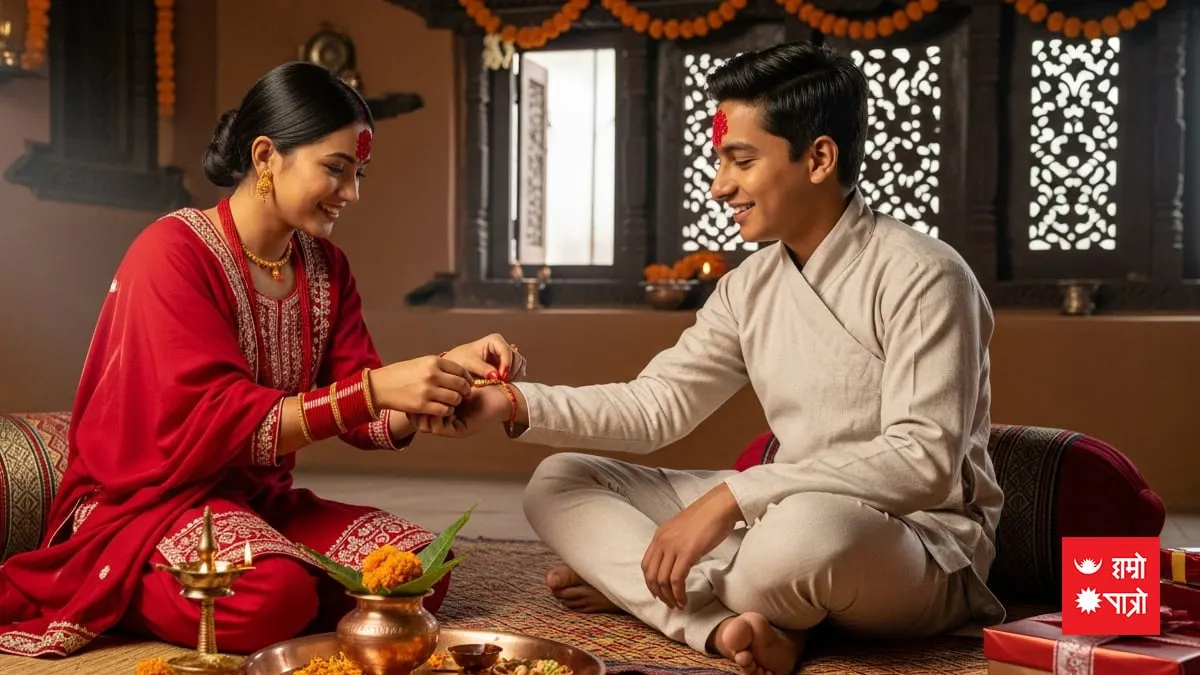
रक्षा बन्धन
Exclusive audio
Today is also called Gumpunhi in Nepal Bhasa. The Newa community celebrates this day as "Punhi of Gunla Mahina" meaning "Gumpunhi". On this occasion, a statue of Dipankar Buddha and other related statues called 'Bahidya: Boyegu' are displayed in Bahal Vihar in the inner city of the Kathmandu valley.
Rakshabandhan
The festival is made up of two words, namely "Raksha" and "Bandhan." As per the Sanskrit terminology, the occasion means "the tie or knot of protection" where "Raksha" stands for the protection and "Bandhan" signifies the verb to tie. Together, the festival symbolizes the eternal love of brother-sister relationship. Sisters tie colorful threads on their brothers' wrists and put dots of vermilion paste on their brothers' foreheads while praying for them to live a long life. Brothers, in turn, give their sisters gifts-usually a piece of jewelry or clothing, or perhaps some money-while promising to protect them throughout their lives. In families where there are only boys or only girls, a friend or relative is asked to act as a brother or sister during the festival. According to Hindu tradition, it is believed that doing so will bring goodness. Some of them go to the Guru Purohit themselves or go to the temple to tie the Rakshabandhan. It is also customary to take out the thread tied and wrap it around the tail of a cow, later if one feels like untying the thread.
On this day, sisters tie colorful threads and flowers on the right wrists of their brothers and wish them longevity and success. Rakhi is very popular in the Tarai region of Nepal, India, Bangladesh, and other countries and the importance of this festival is very high.
Kwati day: A specific dish
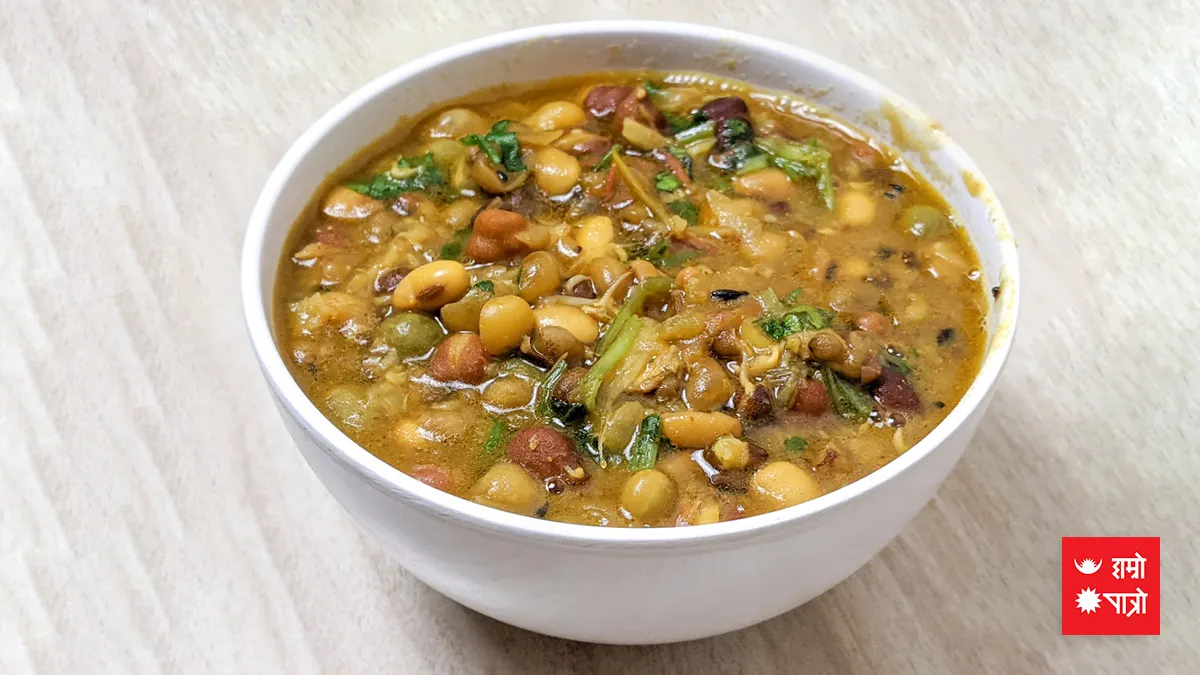
क्वाति खाने दिन
Exclusive audio
A special dish that should not be missed in this festival is "Kwati" made from soaked and sprouted beans. In Nepal language, Kwati means 'Kwa:' which means hot dish, 'Ti' means liquid. Nine types of beans compose this exclusively nutritious dish, this day is the day for this dish and taste. The green sprouted beans are cooked and eaten especially as a liquid vegetable and it is also an important flavor of the day. Kwati has its way of cooking, some cook that as it is and some mix meats and other vegetables to it.
Today, there is a belief that if you eat Kwati, you will get rid of various diseases related to digestion. A special type of Kwati eaten by the Newar community is called "Nwangi". Whether in the country or abroad, with family or outside the family, either you believe in any religion or not? May Janai Poornima touches you with the wave of purity. May this ancient culture of the raw thread continue as a symbol of unconditional love, harmony, and protection for all.
Poornima Vrata

पूर्णिमा व्रत
Exclusive audio
The last day of Shukla Paksha is the full moon day. On this tithi, the moon is the brightest and magnificent. It is believed that fasting on this day brings immense lunar grace to health, prosperity, and peace. On the full moon day, Lord Shiva and Vishnu are especially worshiped. Special worship to Lord Vishnu is done in the form of Satya Narayan Puja. Satya Narayan Puja is usually performed whenever possible, although the fruits of this puja performed on the day of the full moon are very abundant.
From a scientific point of view, it is said that gravity will have a great effect on the earth on the day of the full moon and self-purification will be done by fasting on this day and remembering the name of God. By fasting on this day, the metabolic process will be strengthened, gastric problems will be solved and positive energy will increase in the body.
This day is fasted from sunrise in the morning to moonrise in the evening. Some people observe this fast without drinking water, while others observe this fast by eating only one meal and eating no salt (alino) food. In the evening, after the moonrise, the fast ends with the sighting of the moon.
Let there be an end to the flood and landslide, let there be the protection of both religion and the followers of religion.
Rishi Tarpani
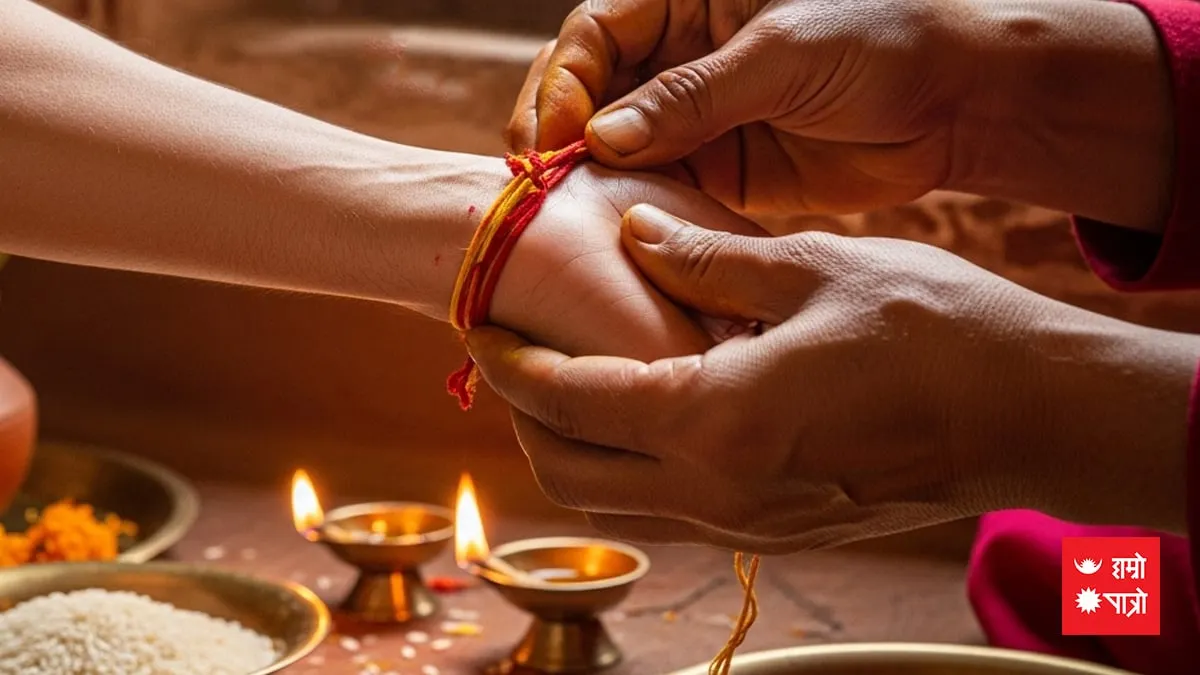
ऋषितर्पणी
Exclusive audio
Janai Purnima is also called Rishi Tarpani because Tagadhari offers tarpan to seven sages including Kashyapa, Atri, Bharadwaja, Gautama, Jamadagni, Vishwamitra and Arundhati.
All the followers of Sanatana Dharma have sages as their ancestors and according to this the gotras of all have been decided according to the names of those sages. In this sense, the tarpan given these days is the memory of our unique ancestors and synonymous with our clan traditions and rituals.
May everyone be protected, best wishes.
Sanskrit Diwas

संस्कृत दिवस
Exclusive audio
World Sanskrit Day is celebrated on Janai Purnima every year to bring the objective importance of Sanskrit language to the public and to research the vast knowledge in Sanskrit literature, to motivate the intellectual community towards it, and to inspire students to study the Sanskrit language. Since the Vedas are recited on the day of Shravan Purnima, the day of Sanskrit language which has a history of more than 5000 years, this day is celebrated as Sanskrit Day.
Today, World Sanskrit Day is being celebrated by organizing various programs to spread knowledge in the texts written in the Sanskrit language. World Sanskrit Day is being celebrated for the promotion and promotion of Sanskrit language. Even though the love for Sanskrit language is not so much in the youth of today, it is being celebrated with the idea of establishing the love of Sanskrit language among the younger generation. Today, various programs are organized for Sanskrit Jagran or awareness across the country.
International Day of the World's Indigenous Peoples
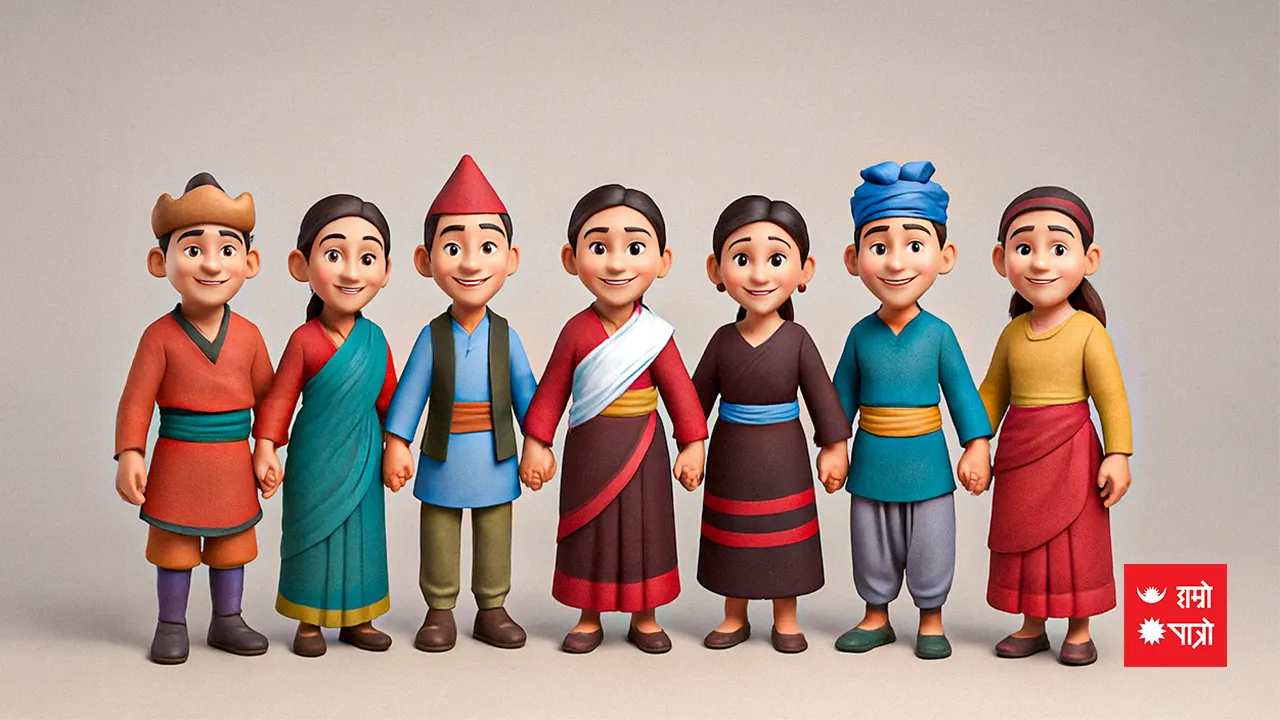
अन्तर्राष्ट्रिय आदिवासी दिवस
Exclusive audio
Indigenous peoples across the globe
Over 476 million indigenous peoples are living in 90 countries across the world, accounting for 6.2 percent of the global population. Indigenous peoples are the holders of a vast diversity of unique cultures, traditions, languages, and knowledge systems. They have a special relationship with their lands and hold diverse concepts of development based on their worldviews and priorities.
Meaning of "Adi"
Indigenous people are called Adivasi in the Nepali language. 'Adi' refers to an ancient historical time, hence the people who have been living in a place for a very long time and have been cultivating the soil of that land for generations and have many original identities including arts and crafts are called AdiVasi.
Safeguarding indigenous people and their knowledge is the major issue today, their territories are home to 80% of the world's biodiversity and they teach us the balance of life and nature like no one else. The United Nations General Assembly on December 23, 1994, introduced the concept of celebrating August 9 as the International Day of Indigenous Peoples. The United Nations had earlier called for a decade from 1994 to 2004, including the Indigenous Decade for Action and Dignity.
The UN logo for the International Day of the World's Indigenous Peoples day was designed by Bangladeshi artist Reban Dewan. The logo features two green-eared ears that surround the earth. With the development of human civilization and the beginning of the migration, the density of immigrants has gradually increased and their identity, existence, different qualities, and customs have started to decrease.
Indigenous peoples, who make up 5 percent of the world's population, make up 15 percent of the worlds poor. The identity and presence of indigenous peoples from the polar regions of the earth to the South Pacific coast are declining as the later immigrant communities have been dominated by various sectors including occupation, identity, and settlement.
United Nations Declaration on the Rights of Indigenous People
Article 14 of the United Nations Declaration on the Rights of Indigenous Peoples states that indigenous peoples have the right to establish and control educational systems and institutions appropriate to their culture, language, customs, and traditions. Various studies have clearly shown the huge disparity between indigenous and non-indigenous communities in terms of educational opportunities, development, and overall human rights facilities.
Indigenous communities, who have been munching on nature for generations, are an ancient asset to the world, and maintaining their identity in the mainstream of development has been a major challenge for the world community. There are indigenous communities in most parts of Nepal, a multi-ethnic, multi-religious, and multicultural country, and they are rapidly trying to keep their identity, customs, and originality alive. Shockingly, things have not been able to continue and even their identity has been lost by changing their original surname.
The bitter truth is that their presence in their place will be more beneficial to the world and the community than to the cities, settlements, and connected factories built by displacing and dislocating the indigenous peoples.
A comfortable, simple, and developed society is the responsibility of all of us for the Adivasi community. Whether we are a non-Adivasi or Adivasi community, it is important to show the next generation a realistic picture of society and a reflection of the origin of development. Happy Adivasi Day to all!
International Soil Conservation Day
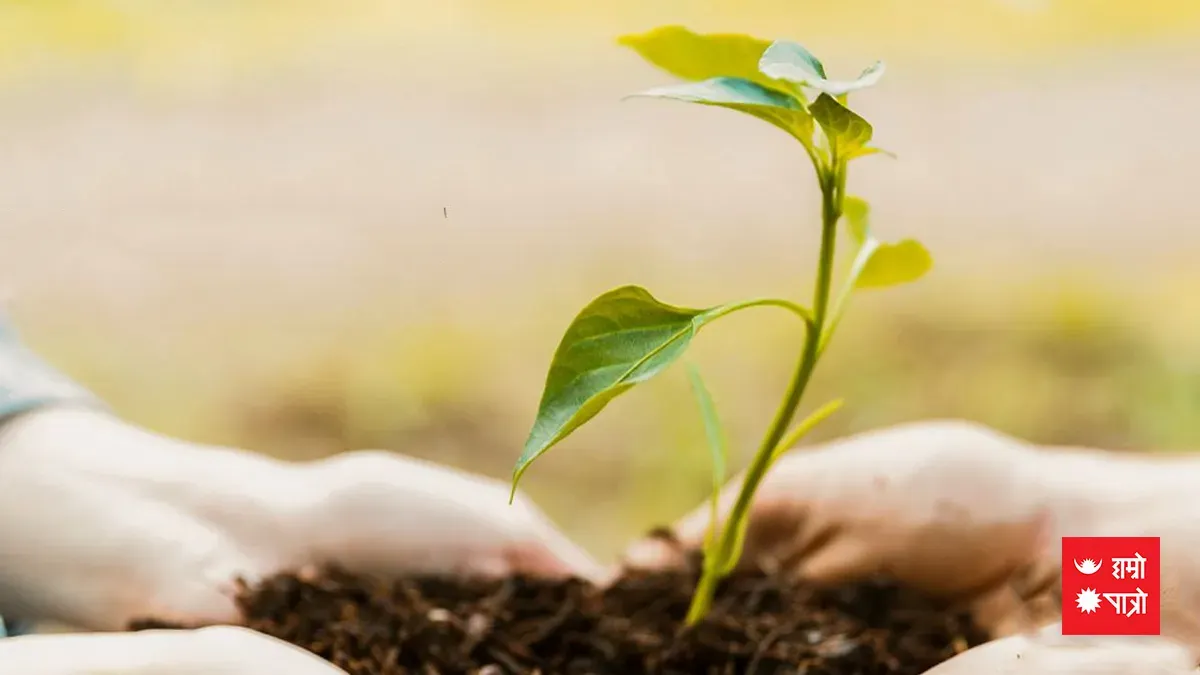
अन्तर्राष्ट्रिय भू संरक्षण दिवस
Exclusive audio
National Land Conservation Day is celebrated in Nepal every year on the 24th of the month of Shravan.To help maintain ecological balance by reducing natural disasters such as floods, landslides, and erosion, and to maintain soil fertility by reducing erosion and to protect infrastructure. This day was started as a commemoration of the establishment of the Land and Watershed Protection Department on 24th Shravan 2031 B.S. Along with the establishment of the department, service delivery was started by establishing the land conservation office at the district level. After the year 2031, the day of the establishment of the department, Shravan 24th is celebrated as "Bhu Sanrakshan Diwas".
Current situation
According to Nepal's National Land Conservation Policy 27 percent of Nepal's land is occupied by agriculture and 44 percent by forest and Bushes. Recently, there is a rapid change in the pattern of land use. Cultivable land is decreasing due to unorganized plotting and unrestrained construction of physical structures. Our weak lands, which have been tilled and cultivated since before, have now become even more vulnerable due to the movement of dozers and tippers to make roads. On the other hand, water-borne disasters are also increasing. It is certain that the land use pattern in the country needs to be extensively changed as the once agrarian country is now becoming food import-oriented.
Upcomming Events
-
19Paush
-
21PaushGuru Gobinda Singh Jayanti 2 days remaning
-
23PaushAraniko Smriti Day 4 days remaning
-
24PaushNepal Astrology Council Establishment Day 5 days remaning
-
27PaushPrithivi Jayanti/Rashtriya Ekata Diwas/Gorakhkali Puja 8 days remaning
-
29PaushNational Bhakka Day 10 days remaning
-
30PaushShattila Ekadashi 11 days remaning
-
1MaghMakar Sankranti/Ghiu chaku khane Din/Uttarayan Arambha 12 days remaning
-
2MaghNational Earthquake Safety Day/Pradosh Vrata 13 days remaning
-
5MaghSonam Lhochhar/Shree Ballav Jayanti 16 days remaning
-
8MaghTilkunda Chauthi 19 days remaning
-
9MaghBasanta Panchami vrata/Saraswati Pooja 20 days remaning
-
10MaghSkanda Sasti/Achala Saptami/International Day of Education 21 days remaning
-
11MaghGorakhkali Puja/World Leprosy Day 22 days remaning
-
12MaghInternational Custom Day 23 days remaning
-
13MaghDron Nawami 24 days remaning
-
15MaghBhima Ekadashi Vrata 26 days remaning
-
16MaghSahid Diwas/Pradosh Vrata 27 days remaning
-
18MaghShree Swasthani Brata Samapti/Poornima Wrata 29 days remaning
-
19MaghWorld Wetlands Day 30 days remaning
-
21MaghWorld Cancer Day 32 days remaning
-
25MaghRavisaptami Vrata 36 days remaning
-
26MaghGorakhkali Puja 37 days remaning
-
28MaghInternational Day of Women and Girls in Science/Safer Internet Day 39 days remaning
-
1FalgunKumbha Sankranti/Bijaya Ekadashi Vrata/World Radio Day 41 days remaning
-
2FalgunShani Pradosh Vrata/Valentine's Day 42 days remaning
-
3FalgunMaha-Shivaratri / Army Day/Silachahre Puja 43 days remaning
-
6FalgunGyalpo Lhosar 46 days remaning
-
7FalgunPrajatantra Diwas / Election Day 47 days remaning
-
8FalgunWorld Day of Social Justice 48 days remaning
-
9FalgunInternational Mother Language Day 49 days remaning
-
12FalgunBhaumashtami Wrata/Gorakhkali Puja 52 days remaning
-
15FalgunAmalaki Ekadashi Vrata/World NGO Day 55 days remaning
-
17FalgunPradosh Vrata/Zero Discrimination Day 57 days remaning
-
18FalgunFagu Poornima / Holi/Poornima Vrata 58 days remaning
-
19FalgunFagu Poornima (Terai)/Khandagras Chandra Grahan/World Wildlife Day 59 days remaning
-
20FalgunTel Lagaune Ra Aapko Mujura Khane Din 60 days remaning
-
24FalgunInternational Womens Day 64 days remaning
-
27FalgunGorakhkali Puja 67 days remaning
-
1ChaitraMeen Sankranti/Paapmochini Ekadashi Brata/World Consumer Rights Day 71 days remaning
Jyotish
-
Jyotish Krishna Prasad Bhandariउपप्राध्यापक (Asst. professor of Sanskrit) नेपा�...
-
Jyotish Purushottam Ghimireनेपाल संस्कृत विश्वविद्यालय, �...
-
Jyotish Vaman Sapkotaशिक्षा - व्याकरणाचार्य, पौरोही...
-
 Jyotish Dharmendra Krishna Paudelशास्त्री धर्मेन्द्र कृष्ण पौ�...
Jyotish Dharmendra Krishna Paudelशास्त्री धर्मेन्द्र कृष्ण पौ�...
-
Jyotish Mohan Ghimireसम्पुर्णानन्द संस्कृत विश्वव...
-
Jyotish Narayan Prasad Gautamगुरुकुल शिक्षा प्रणालीबाट ज्�...
-
Jyotish Pandit Mukunda Nepalज्योतिष पण्डित मुकुन्द नेपाल�...
-
Jyotish Smarika Acharyaबाल्मीकि बिद्यापिठ बाट ज्योत�...
-
Jyotish Damodar Poudelनेपाल संस्कृत विश्व बिद्यालय�...
-
Jyotish Amrit Paudelवाराणसीकै सम्पूर्णानन्द संस्...
-
Jyotish Khageshwor Subediगुरुकुल पद्दति बाट ज्योतिषीय �...
-
Jyotish Dipendra Khatiwadaसम्पुर्णानन्द संस्कृत बिश्वब...
-
Jyotish Narayan Prasad Bhandariज्योतिषका उप-प्राध्यापक (lecturer of A...
-
 Jyotish Kuresh Pandey११ वर्षको अनुभवसहित विभिन्न ध�...
Jyotish Kuresh Pandey११ वर्षको अनुभवसहित विभिन्न ध�...
-
Jyotish Deepak Prasad Kafleसम्पूर्णानन्द संस्कृत विश्वव...
-
 Jyotish Mukunda Sharmaस्वाध्याय, सत्सङ्ग र सदाचारजस�...
Jyotish Mukunda Sharmaस्वाध्याय, सत्सङ्ग र सदाचारजस�...
-
Jyotish Damodar Kaushikज्योतिष र व्याकरण विषयमा आचार�...
-
Jyotish Hamro patroनेपाल संस्कृत विश्वविद्यालय �...
-
Jyotish Ghanashyam Pokharelनेपाल संस्कृत विश्वविद्यालयब...
Hororscope
Liked by:
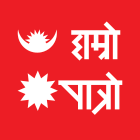

















 Mesh
Mesh Brish
Brish Mithun
Mithun Karkat
Karkat  Singha
Singha  Kanya
Kanya Tula
Tula Brischik
Brischik Dhanu
Dhanu  Makar
Makar  Kumbha
Kumbha Meen
Meen